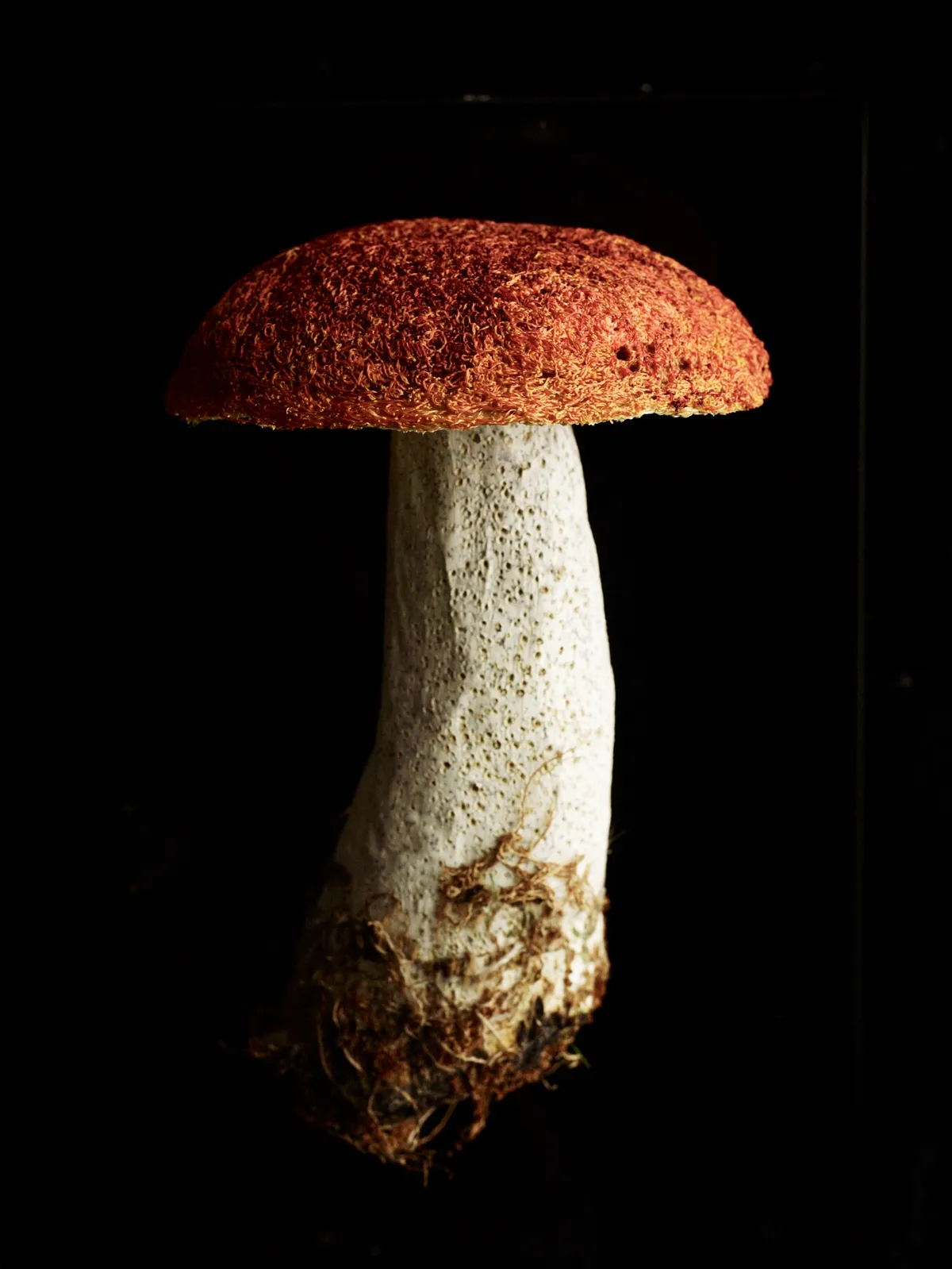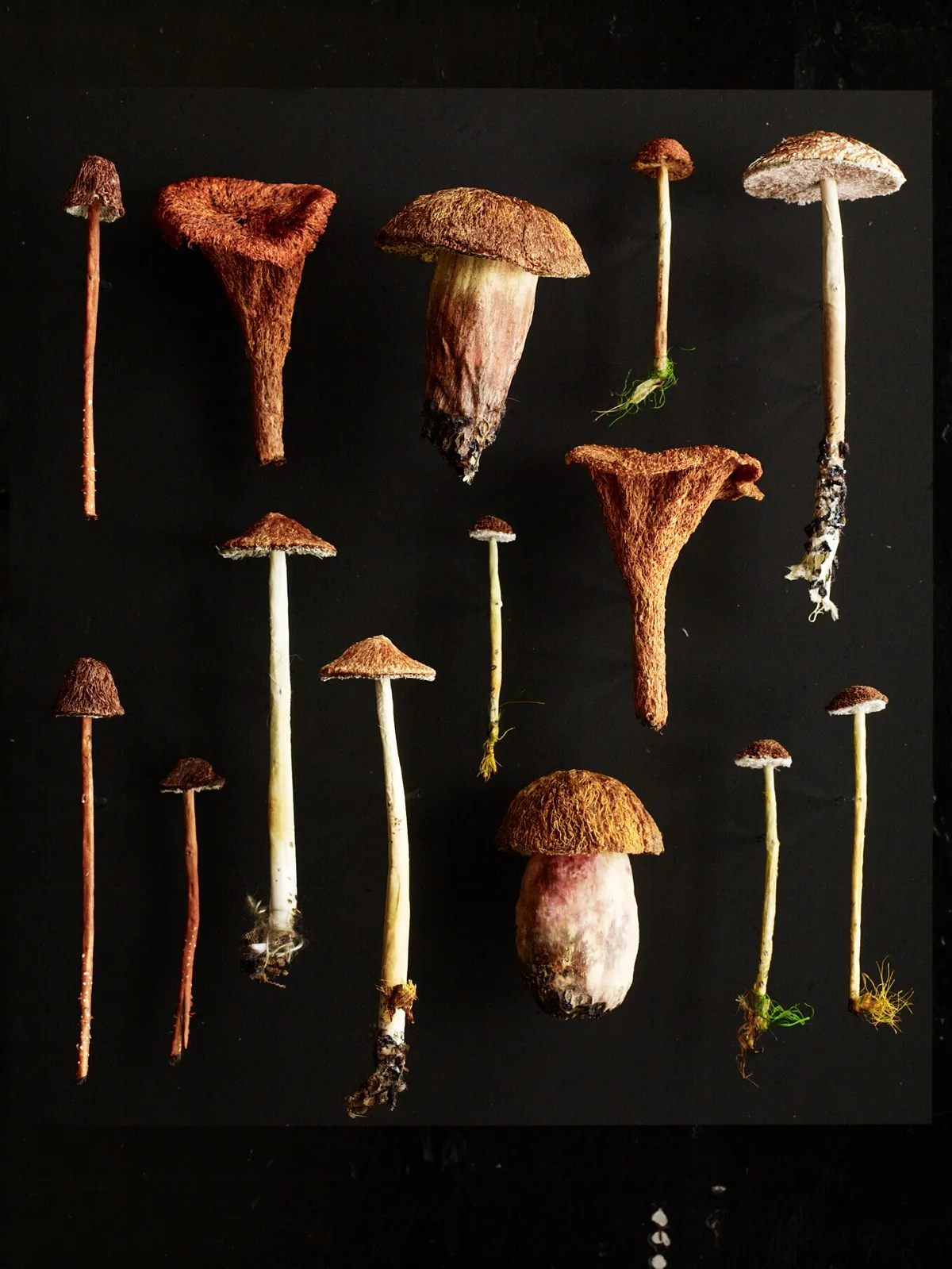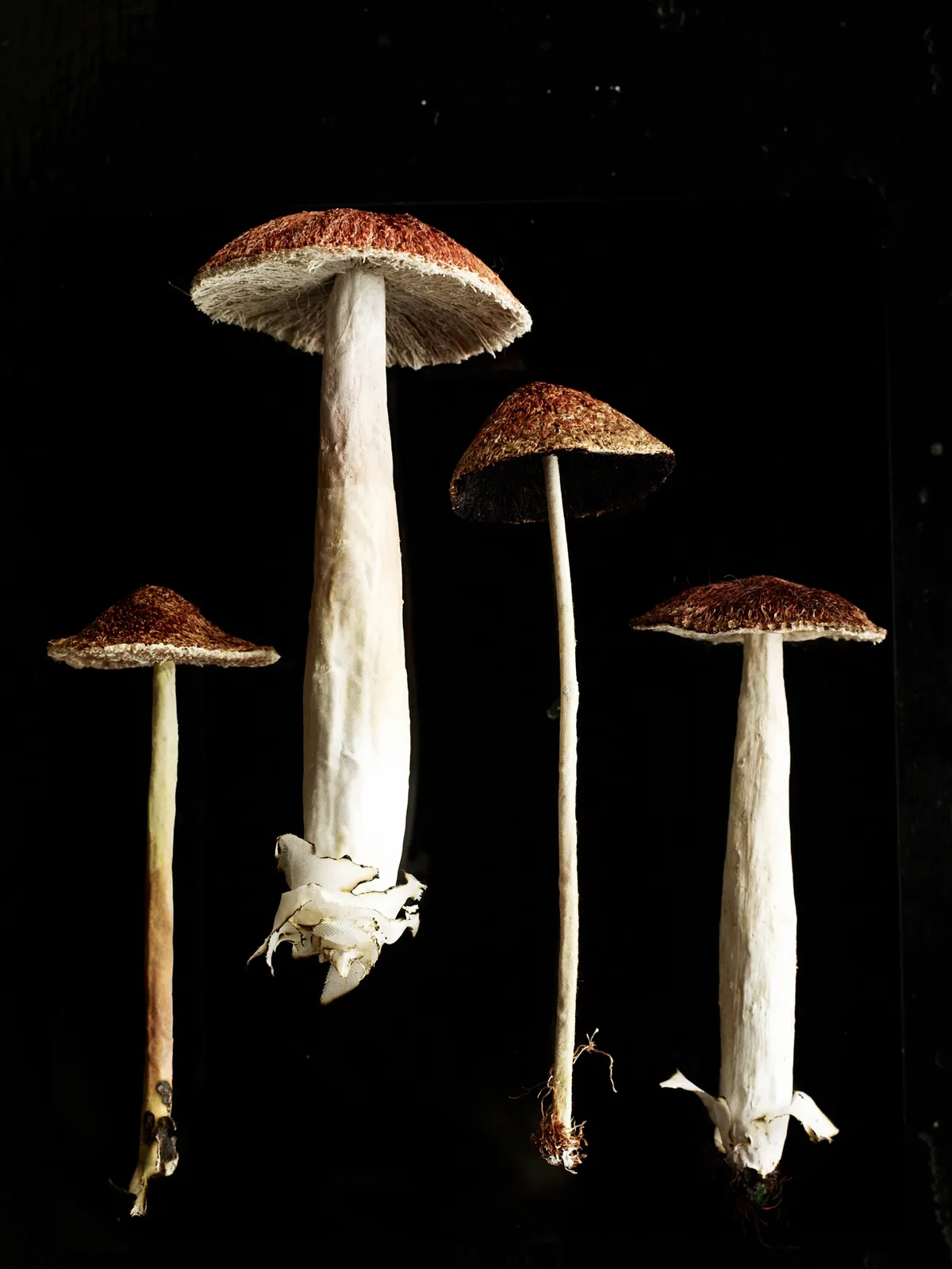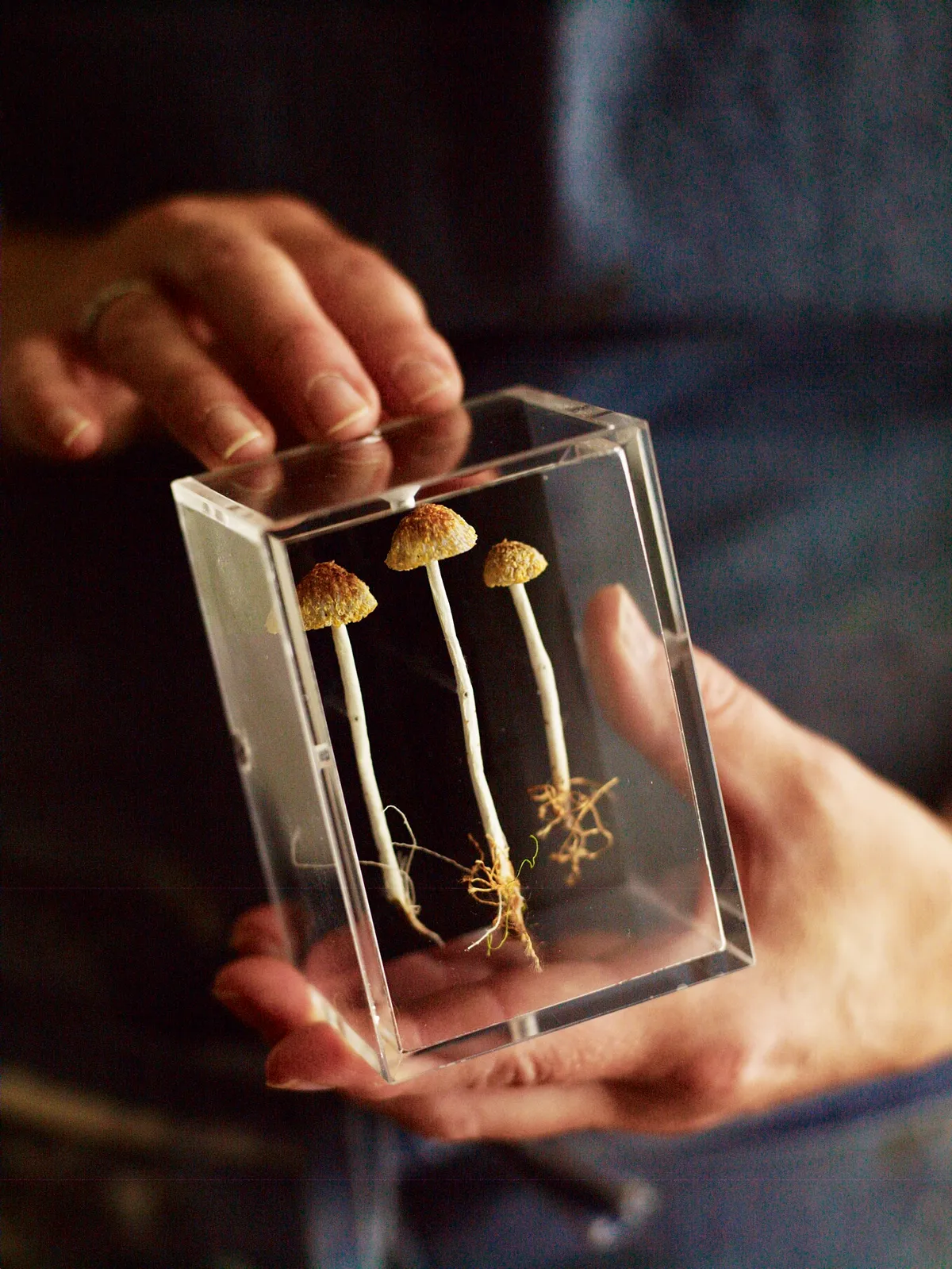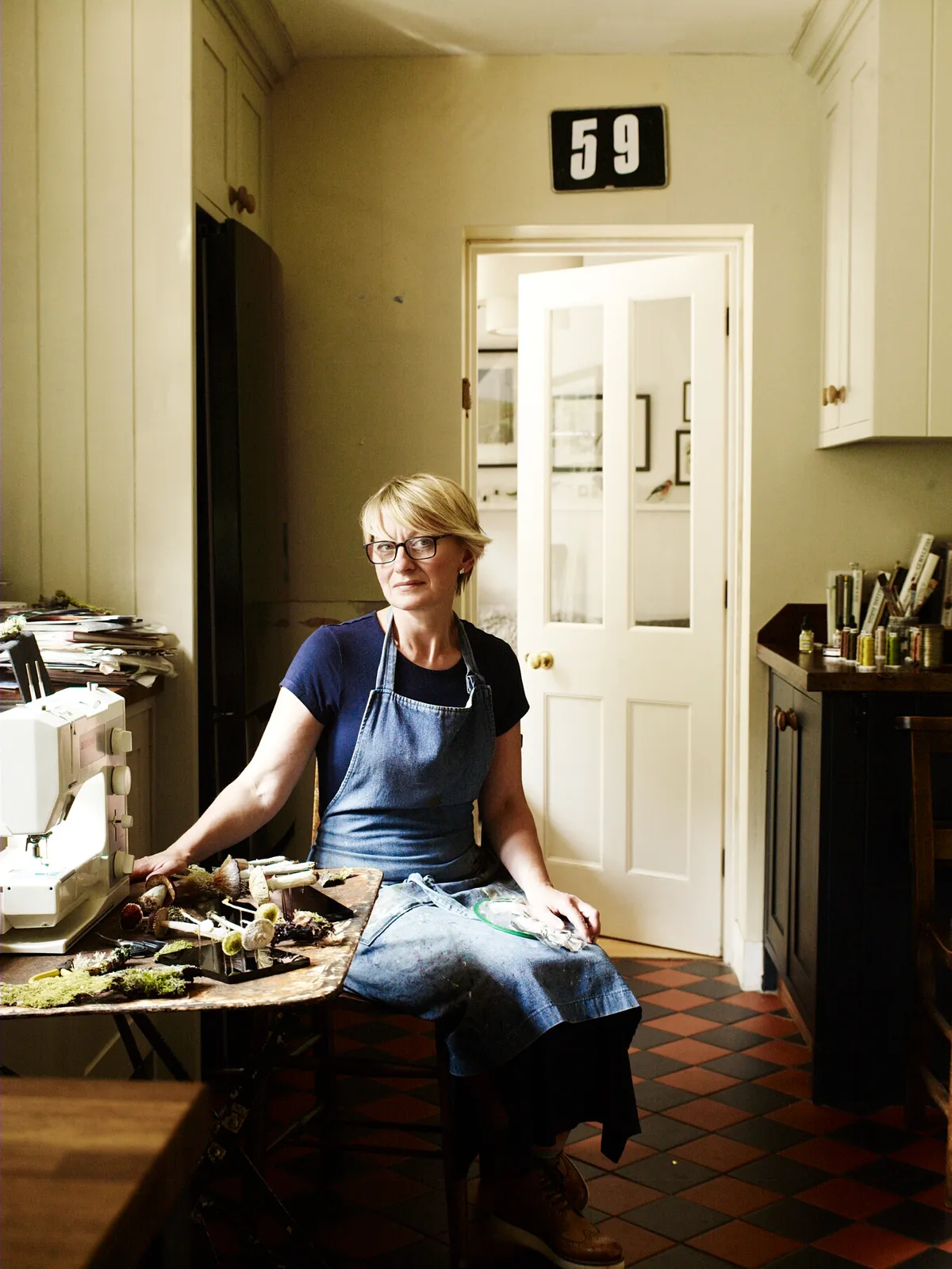Art embroiderer Amanda Cobbett’s work is like the best form of magic – delightful, surprising and, to the untrained eye, completely unfathomable. At first glance her perspex curiosity cabinets seem filled with a simple assortment of fungi, twigs or lichen. But look closer and you’ll see, just, that these are Amanda’s, not Mother Nature’s, creations, though it’s hard to put your finger on exactly what is different. “People often think I’ve embroidered on bark,” says Amanda. “Or they ask how I’ve preserved the mushrooms, but in fact I use no natural materials at all.” Instead, Amanda’s ‘preservations’ – for this is how she thinks of them – are a beguiling blend of papier-mâché and machine embroidery, embellished with hand-coloured silks and cleverly worked threads, often singed to earthy effect with a tool not unlike a soldering iron.
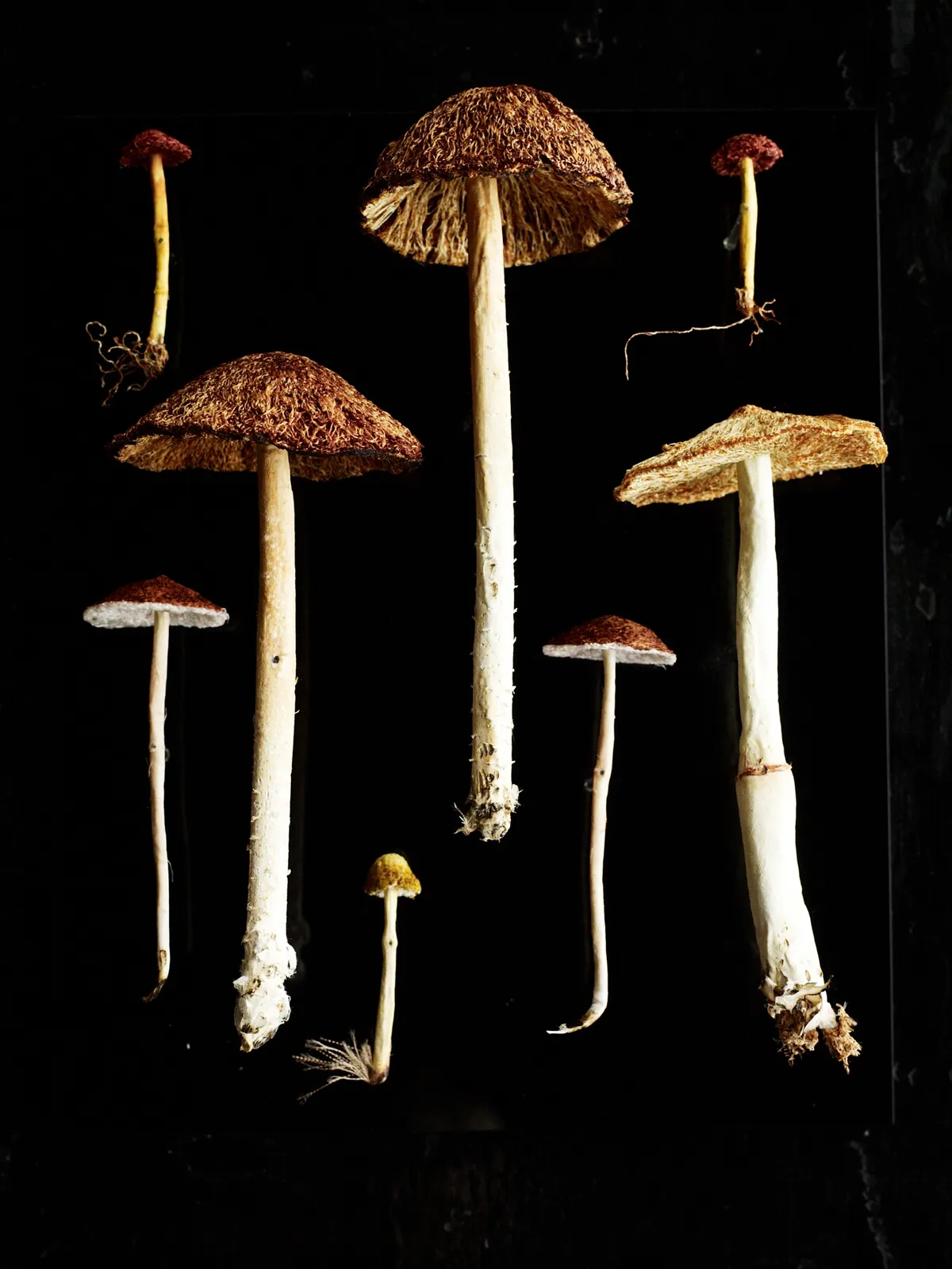
This fascination with preservation began when Amanda was studying textile design at Chelsea College of Art in the early 1990s, when a class trip took her to the Natural History Museum. “We were shown the original copperplate illustrations from Captain Cook’s voyage on the Endeavour,” she says. “I loved the idea that their beauty had lasted all this time, and also that you’d never know whether they were real or whether the artist had used a bit of licence and made them up.”
Curiosity piqued, she began researching in other departments (most notably entomology, where she was fascinated by the ‘little jewel-like bugs pinned out in display trays’) and visited The Royal Botanic Gardens, Kew, with similar aims. A trip to the mycology department made a particular impression. Where the Natural History Museum’s bugs had been preserved as if they were still living – almost – the tissue paper she drew back here revealed something quite different – a sad-looking collection of shrivelled mushrooms. “It struck me as a real shame that they had once been beautiful and now were not. It got me thinking about how to make something look preserved when it obviously isn’t.”
Fast-forward 12 years, after a successful, if exhausting, career as a designer producing floral prints for clothing and interior design brands, and it is this idea that Amanda now explores in her work, using finds from her twice-daily dog walks in Surrey’s Hurtwood Forest as her inspiration.
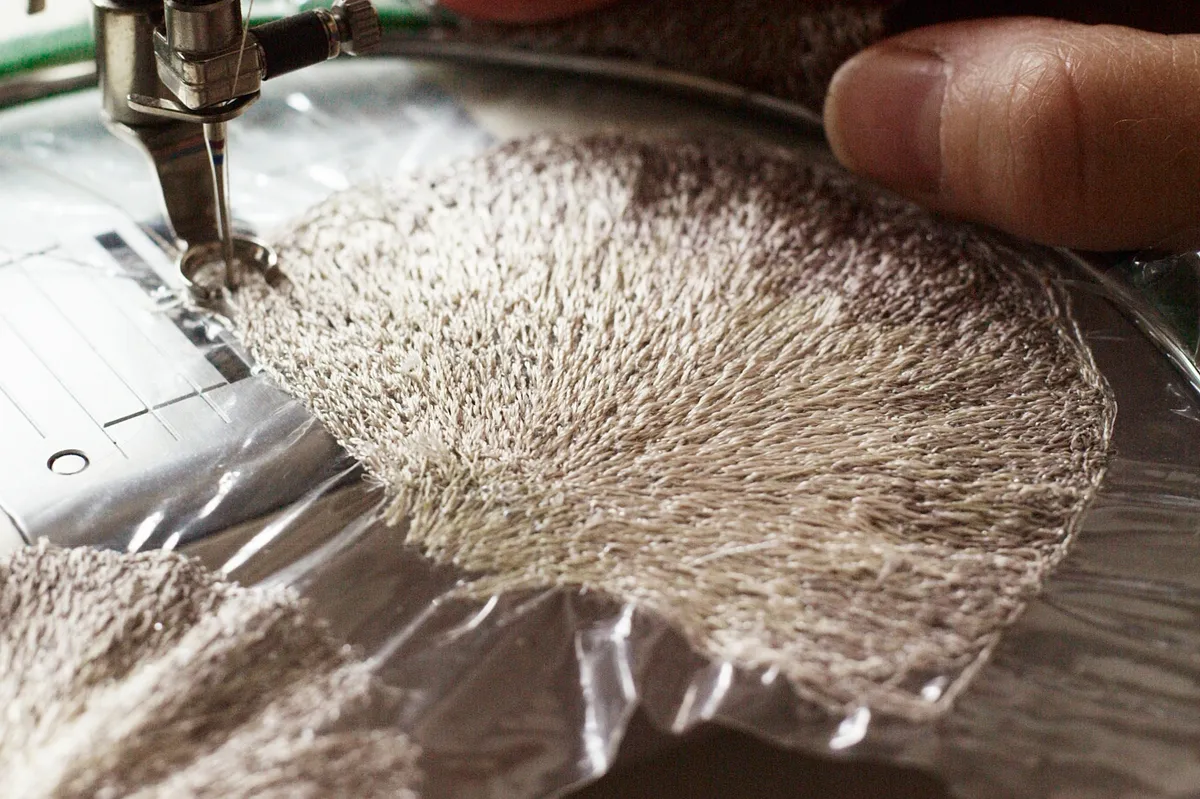
Amanda uses a Bernina sewing machine, given to her by her mother-in-law, as her pencil, ‘drawing’ with the thread.
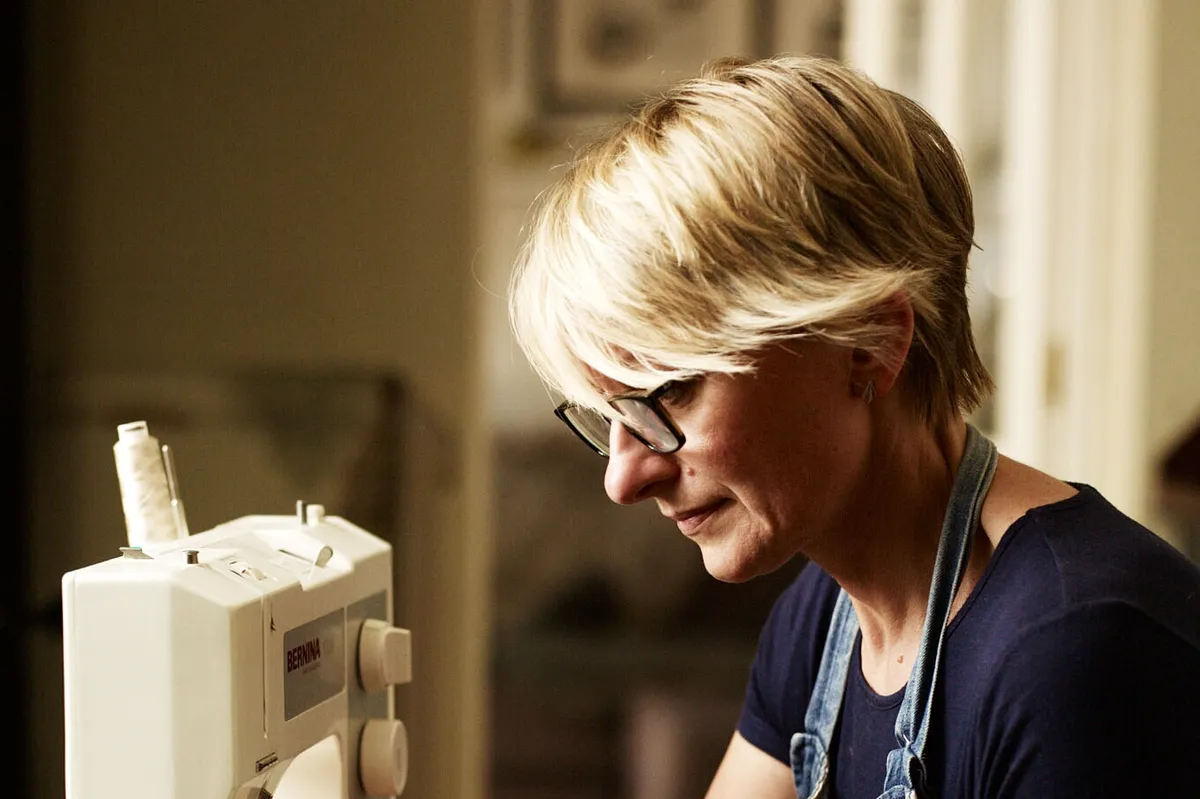
Amanda has a huge collection of colour-fast, rayon blend threads in a rainbow of tones.
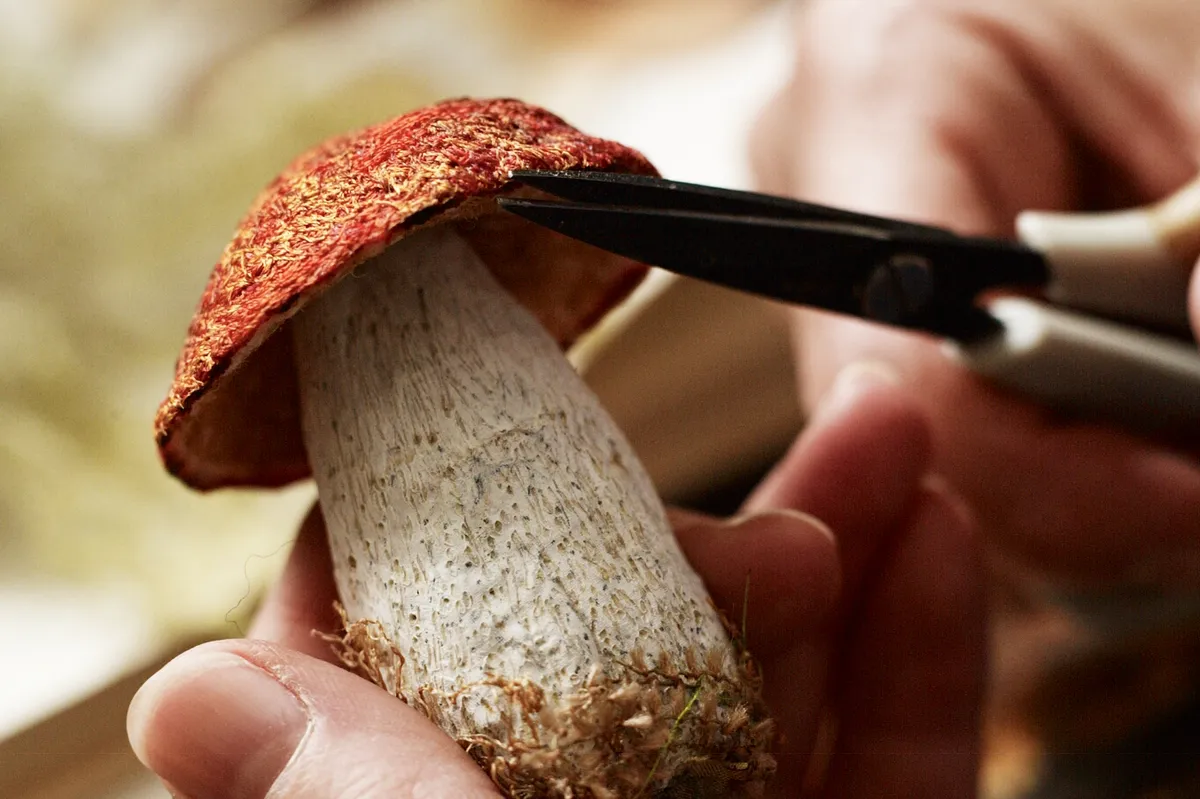
Amanda puts the finishing touches to a mushroom before mounting it.
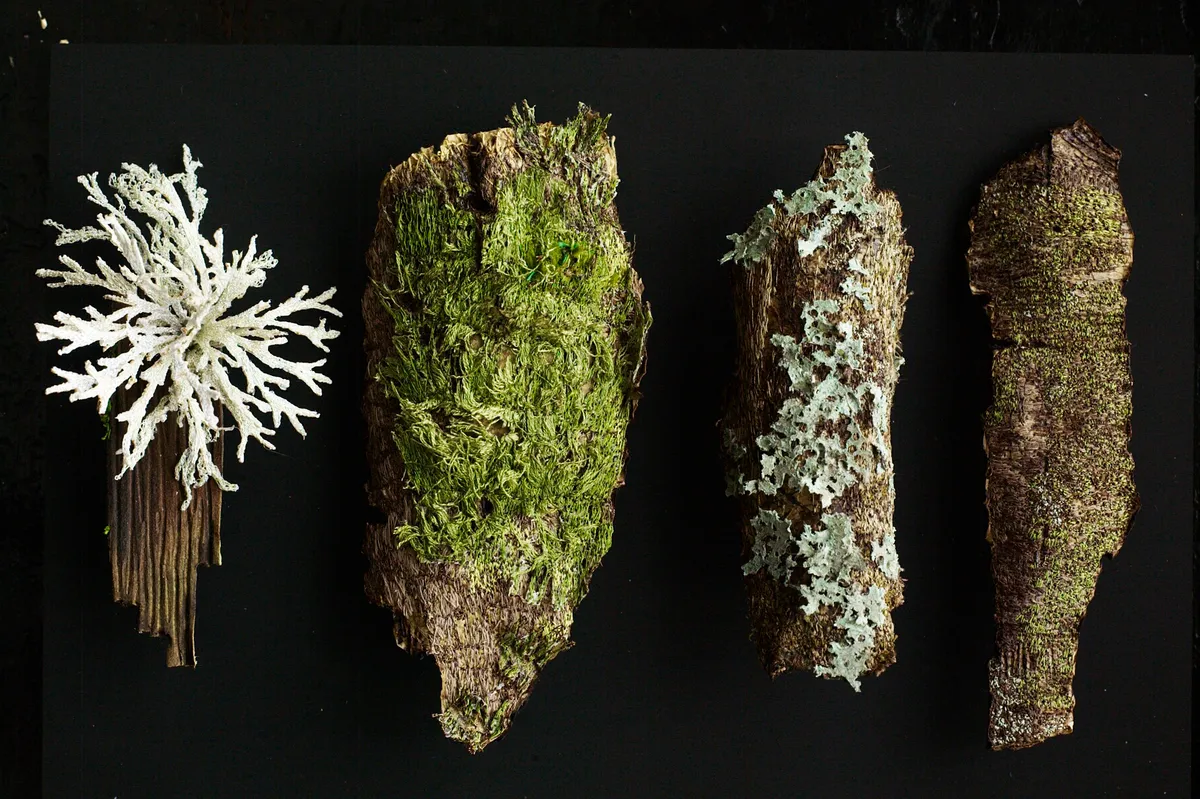
She also enjoys making pieces based on the bark, moss and lichen she finds in the forest. Here we see, from left, lichen Pseudevernia furfuracea, creeping feather-moss (Amblystegium serpens) and lichen Hypogymnia physodes.
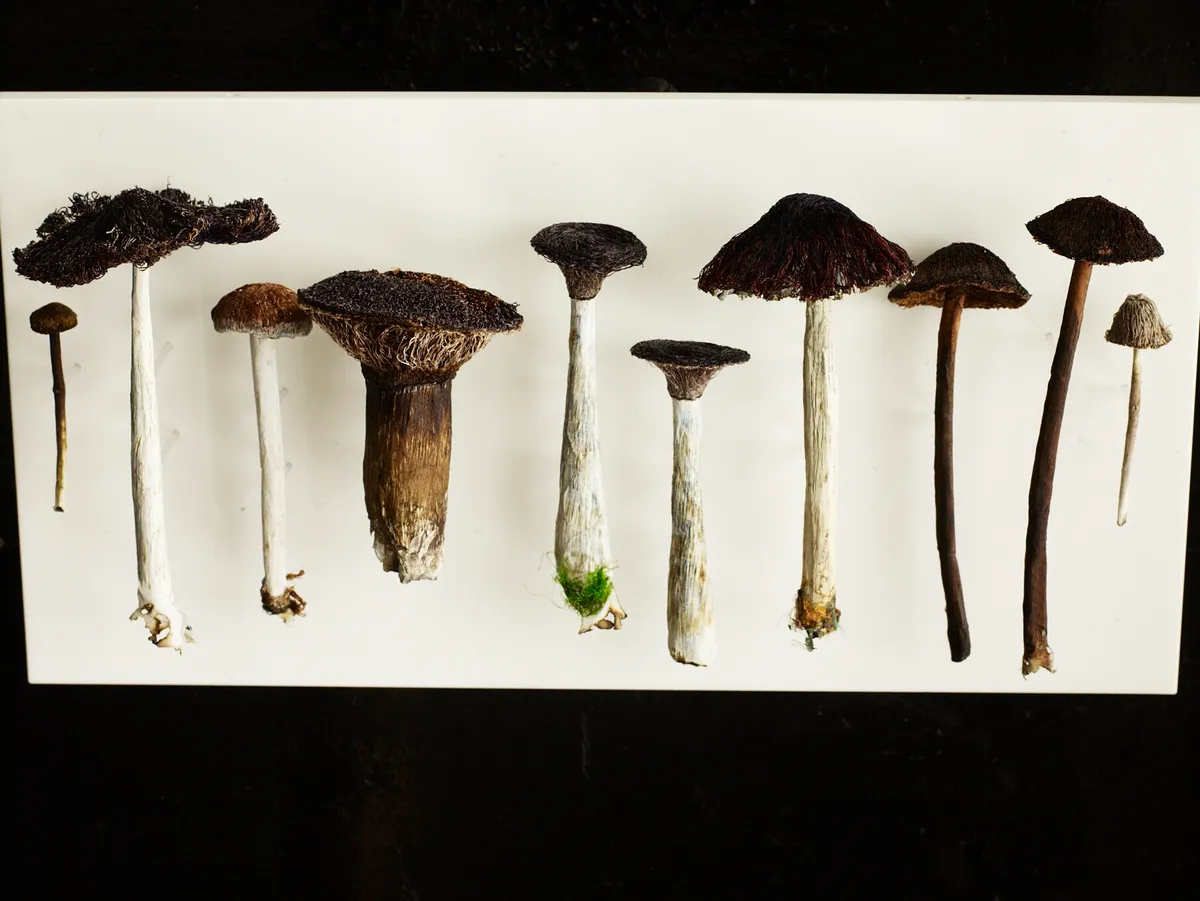
Amanda has found around 20 different types of mushroom in the forest around her house. This selection of mushrooms includes the goblet Pseudoclitocybe cyathiformis (formerly Cantharellula cyathiformis), the garlic parachute (Marasmius alliaceus), Mycena galopus (formerly Mycena leucogala), M. leptocephala, blackening brittlegill (Russula albonigra), wood pinkgill (Entoloma rhodopolium), Coprinopsis picacea (formerly Coprinus picaceus) and C.narcoticus.
Useful information Find out more about Amanda’s work at amandacobbett.com.
